What is a Stator in a Motorcycle?
A stator is an essential component of a motorcycle’s electrical system. It is part of the alternator, which generates electrical power for the motorcycle. The stator works by producing alternating current (AC) through electromagnetic induction. This process starts as the rotor spins inside the stator.
The stator is typically located in the engine casing. It consists of wire coils arranged in a circular shape. The rotor, attached to the crankshaft, rotates within these coils. As it spins, a magnetic field is created, inducing electrical current in the stator coils.
Unlike other electrical components, the stator is critical for maintaining battery charge. It also powers the ignition, lights, and other electronic parts of the motorcycle. Without a functioning stator, the motorcycle’s electrical system could fail, causing various issues.
The design and specifications of stators may vary between motorbike models. However, their function remains essentially the same. Learning the basics of a motorcycle stator can help in understanding its role in ensuring smooth rides.

How Does a Stator Work?
A stator works by generating electrical power through electromagnetic induction. When the motorcycle engine runs, the rotor spins inside the stator. This spinning motion creates a magnetic field. The magnetic field interacts with wire coils in the stator, producing alternating current (AC).
The generated AC current is then converted to direct current (DC) by a rectifier. The DC current is used to charge the battery and power various electrical components. These include the headlights, ignition system, and other electronics. Without the stator, a motorcycle cannot produce the necessary power to operate these systems.
The process relies on precise engineering. The interaction between the rotor and stator must be seamless to maintain power consistency. If the stator or rotor malfunctions, electrical output may drop or fail.
Understanding how the stator works helps in diagnosing electrical issues. Regular inspection can prevent sudden failures and ensure a smooth and safe ride.
Key Components of a Motorcycle Stator
The motorcycle stator is made up of several critical components that work together to generate electrical power. Understanding these components can help in diagnosing issues and maintaining the system effectively.
Stator Core
The stator core is the foundation of the stator. It consists of thin iron laminations stacked together. The core provides a surface for winding the copper coils and helps concentrate the magnetic flux generated.
Copper Wire Coils
Copper wire coils are wound around the stator core. These coils are vital for generating electricity. As the magnetic field interacts with these coils, it produces an alternating current (AC).
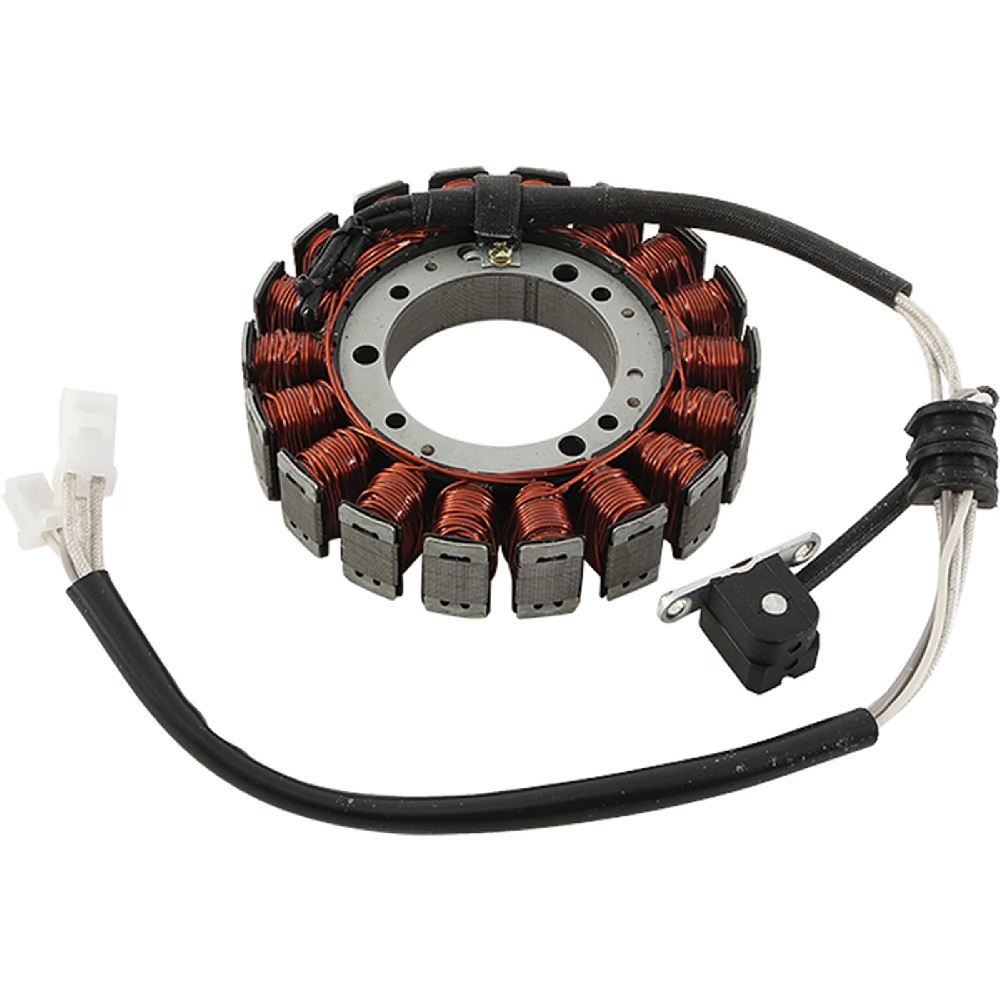
Insulation Materials
Insulation materials protect the copper wire coils from short circuits and overheating. These materials are heat-resistant and durable to handle the electrical flow and temperature changes.
Connection Terminals
The connection terminals link the stator wires to the rest of the electrical system. These terminals transfer the generated electricity to other motorcycle components efficiently.
Mounting Hardware
The mounting hardware secures the stator within the engine casing. Proper mounting ensures stability and reduces vibrations during operation.
Rotor Interaction
While not a direct part of the stator, the rotor plays a crucial role. The rotor spins around or inside the stator, creating the magnetic field needed to induce current.
Every component serves a specific purpose. Together, they ensure the stator functions reliably to produce the electrical power your motorcycle needs.
Common Symptoms of a Faulty Stator
A faulty stator can disrupt your motorcycle’s performance. Recognizing the symptoms early is key to avoiding major repairs. Here are the common signs:
1. Difficulty Starting the Motorcycle
The stator powers the ignition system. If it fails, starting the motorcycle becomes difficult or impossible. A weak or non-charging battery often accompanies this issue.
2. Dimming or Flickering Lights
A malfunctioning stator may not produce enough power for the lights. Headlights, brake lights, and indicator lights may dim or flicker. This becomes more noticeable at lower engine speeds.
3. Battery Failing to Hold Charge
The stator charges the battery as the engine runs. If the battery loses charge quickly, the stator might not be delivering sufficient power.
4. Engine Misfiring or Stalling
A bad stator can lead to irregular power supply. This may cause the engine to misfire or stall unexpectedly. These symptoms are especially noticeable at higher RPMs.
5. Overheating Issues
A faulty stator can lead to overheating in the motorcycle. Overheating can damage other components and affect the bike’s performance.
6. Burning Smell or Visible Damage
Physical damage, such as burnt wire coils or melted insulation, might indicate a faulty stator. A burning smell could also signal overheating from a damaged stator.
7. No Electrical Power at All
In severe cases, the stator might stop functioning altogether. This results in a total loss of electrical power to the motorcycle.
Recognizing these symptoms helps prevent further damage. Early diagnosis and repair ensure your motorcycle operates smoothly and reliably.
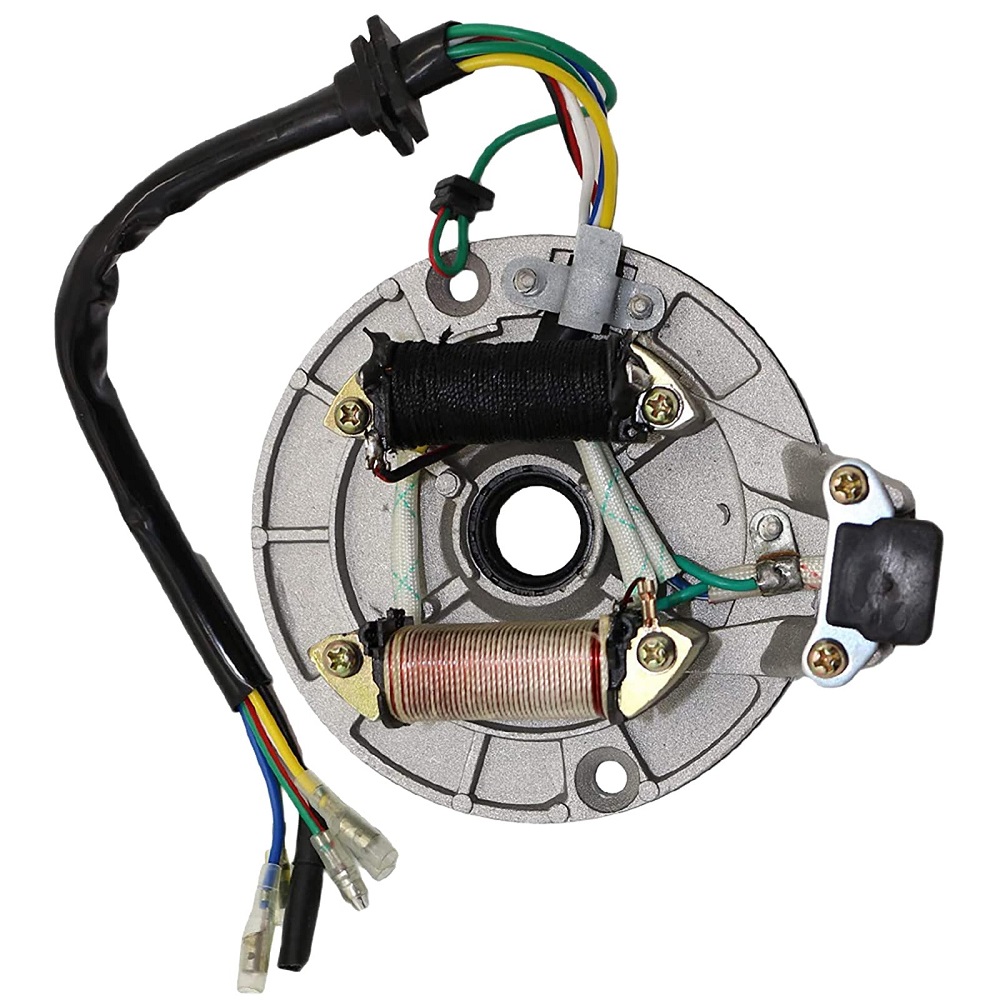
Maintenance Tips for Extending Stator Life
Proper maintenance can extend the life of your motorcycle stator. Follow these tips to ensure it stays in good condition:
- Regularly Inspect for DamageExamine the stator for signs of wear, damage, or burns on the coils. Early detection prevents major issues.
- Keep the Engine CleanDirt and debris can harm the stator. Clean your engine regularly to avoid contamination.
- Check and Replace Oil as NeededOld or dirty oil can cause overheating. Regularly change the oil to maintain optimal performance.
- Ensure Proper CoolingOverheating can damage the stator. Make sure the motorcycle’s cooling system is functioning well.
- Inspect Electrical ConnectionsLoose or corroded connections can cause electrical issues. Check and secure connections on the stator.
- Avoid Power OverloadLimit the use of high-power electrical accessories. Overloading can strain the stator and shorten its life.
- Test the Stator PeriodicallyUse a multimeter to check the stator’s output. Address any irregularities immediately to prevent failure.
- Use Quality Replacement PartsIf you need to replace the stator, use high-quality parts. Poor-quality replacements may fail quickly.
Following these simple steps keeps your stator running smoothly. Regular maintenance not only prevents issues but also ensures reliable performance for your motorcycle.
How to Test a Motorcycle Stator
Testing your motorcycle’s stator is crucial to identifying issues in the electrical system. Here’s a simple, step-by-step guide to help you test a stator effectively and ensure your motorcycle runs smoothly.
1: Gather Necessary Tools
First, prepare the right tools for the task. You will need:
- A digital multimeter
- Screwdriver or wrench (based on your motorcycle model)
- Safety gloves for protection
2: Locate the Stator
Refer to your motorcycle’s manual to locate the stator. It is usually inside the engine casing, near the magneto or alternator.
3: Inspect the Stator
Before testing, visually inspect the stator. Look for burnt coils, frayed wires, corrosion, or melted insulation. Any visible damage indicates the need for replacement.
4: Test for Continuity
- Set your multimeter to the “Ohms” or resistance setting.
- Disconnect the stator from the motorcycle’s wiring harness.
- Test each stator coil by placing the multimeter probes on the coil terminals.
- A good stator will show a consistent resistance value. Infinite or no reading indicates a fault.
5: Check for Grounding Issues
- Set the multimeter to the continuity setting.
- Place one probe on a stator terminal and the other on the stator metal frame.
- There should be no continuity according to the meter. Continuity means the stator is grounded and needs replacement.
6: Test Output Voltage
- Set the multimeter to “AC Voltage” mode.
- With the stator still disconnected, start the engine.
- Place the multimeter probes on two terminals of the stator.
- The voltage should rise as engine RPM increase. Uneven or no voltage indicates an issue.
7: Compare Results
Check your readings against your motorcycle manufacturer’s specifications. If values are out of range, it’s time for a replacement or repair.
Testing your stator regularly keeps your motorcycle in top shape. It also prevents unexpected electrical failures while you’re on the road.
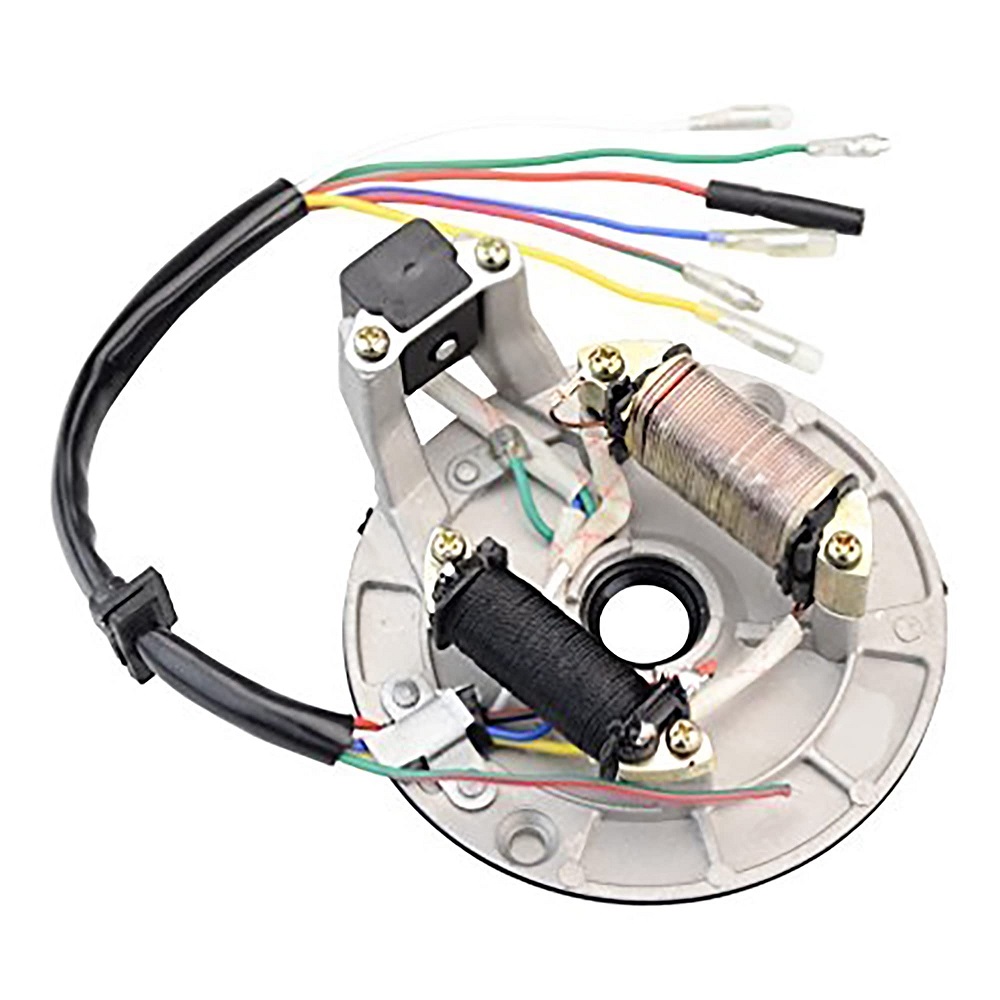
Replacing Your Motorcycle Stator: Step-by-Step Guide
Replacing a motorcycle stator can restore electrical efficiency. Follow this guide to complete the replacement easily.
Step 1: Gather Necessary Tools
Collect essential tools for the task. You will need:
- Screwdrivers or wrenches.
- Replacement stator compatible with your motorcycle.
- Safety gloves for protection.
- Clean cloths and cleaning solution.
Step 2: Prepare Your Motorcycle
Ensure the motorcycle is turned off and cool. Position it on a stable platform. Disconnect the battery completely for safety.
Step 3: Locate the Stator
Find the stator inside the engine casing. Refer to your owner’s manual for precise location.
Step 4: Remove the Engine Cover
Unscrew and carefully remove the engine cover. Use a wrench or screwdriver depending on your model.
Step 5: Detach the Old Stator
Disconnect the stator wiring harness. Unscrew mounting bolts and carefully remove the old stator.
Step 6: Clean the Mounting Area
Wipe the area where the stator sits. Remove dirt and debris to ensure proper installation.
Step 7: Install the New Stator
Place the new stator in its position. Secure it using mounting bolts. Connect the wiring harness firmly.
Step 8: Attach Engine Cover
Carefully position the engine cover back in place. Screw it tightly to ensure stability.
Step 9: Reconnect the Battery
Reconnect the battery terminals securely. Confirm that all connections are tight.
Step 10: Test the Motorcycle
Start the motorcycle and check electrical components. Ensure the battery charges and all systems function well.
These steps make replacing your stator easier. Always follow your motorcycle manual for specific advice. Regular maintenance ensures long-term performance and safety.
Differences Between a Stator and Alternator in Motorcycles
Understanding the difference between the stator and alternator is essential for motorcycle enthusiasts. Both are key components of a motorcycle’s electrical system, but they serve distinct purposes and operate differently.
How a Stator Differs from an Alternator
- Functionality:
- A stator creates alternating current (AC) through electromagnetic induction.
- An alternator converts mechanical energy into electrical energy but includes components like the rectifier.
- Design:
- The stator consists of wire coils mounted in a circular setup.
- The alternator includes the stator, rotor, and a voltage regulator.
- Size and Placement:
- Stators are smaller and located within the engine casing.
- Alternators are larger and often placed externally.
- Power Output:
- The stator deals directly with AC production.
- Alternators regulate and deliver DC power to various systems.
Which One Powers Your Motorcycle?
Motorcycles commonly use stators as part of the charging system. Alternators are more typical in cars or heavy vehicles. It’s crucial to ensure the proper functioning of these parts to avoid electrical issues while riding.
Knowing the differences between the stator and alternator helps in maintaining your motorcycle’s efficiency. Regular checks on the stator keep your bike running smoothly without electricity-related problems.
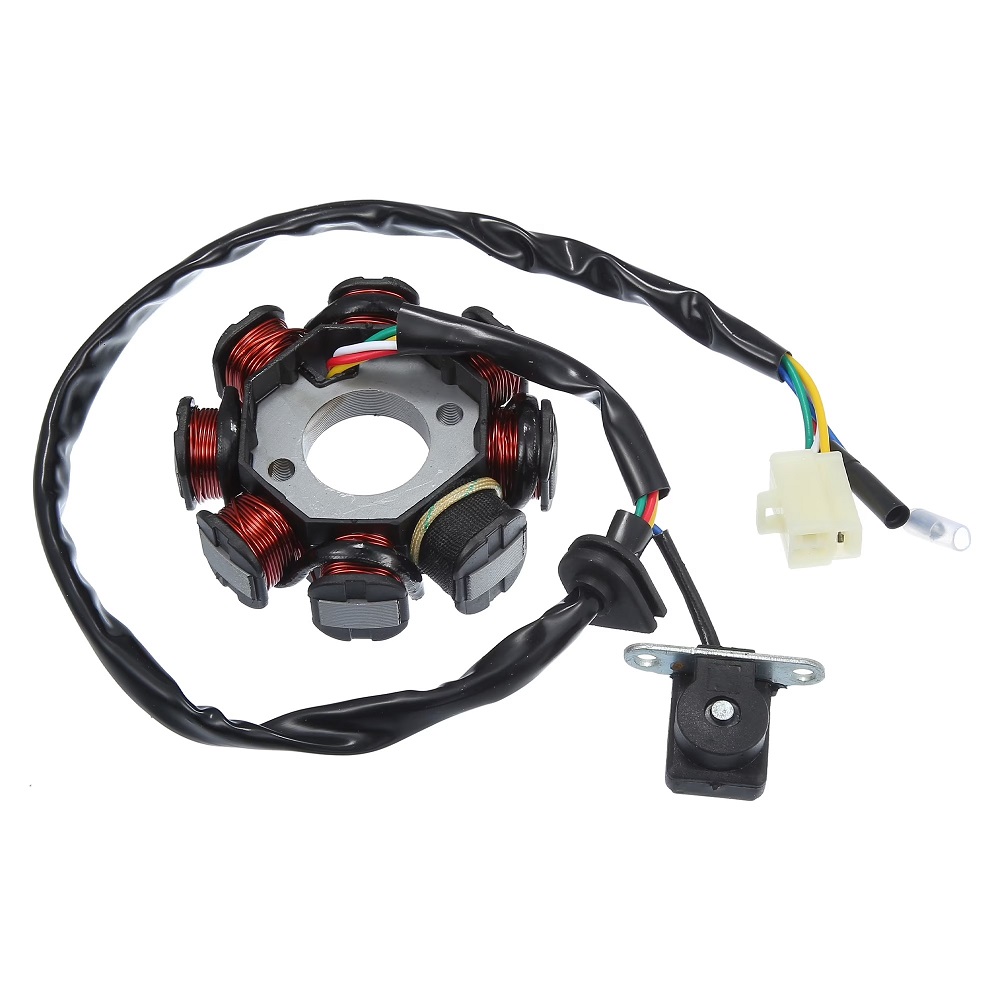
Exploring the Motorcycle Community
Connecting with Enthusiasts
Joining the motorcycle community can expand your knowledge and foster new friendships. Online forums, social media groups, and local clubs offer great platforms to connect with fellow riders interested in maintenance and performance. Engaging with others who share your passion can provide valuable insights into motorcycle care.
Ask questions, share experiences, and learn from other enthusiasts about their stator experiences. The exchange of information can lead to better decision-making regarding maintenance and performance upgrades.
Attending Motorcycle Meets and Events
Consider attending motorcycle meets, shows, or rallies to connect with other enthusiasts. These events often provide opportunities to showcase modified motorcycles, exchange ideas, and even participate in workshops. Engaging with the community can enhance your understanding of motorcycle performance and maintenance.
By attending these gatherings, you can further enrich your motorcycle experience, gaining inspiration and knowledge to improve your own vehicle. Watching how others modify their motorcycles encourages creativity in enhancing your own ride.
Sharing Your Knowledge
As you accumulate experiences in motorcycle maintenance, consider sharing your knowledge. Your insights can be valuable to new enthusiasts looking to learn. Writing blog posts, creating videos, or sharing on social media can contribute positively to the community.
Encouraging others to explore topics like stator maintenance and performance can foster a sense of camaraderie. Your contributions help others navigate their motorcycle journeys, building a supportive network among enthusiasts.
Conclusion
Understanding the crucial role of the stator motorcycle performance is essential for anyone who owns or operates a motorcycle. This vital component not only generates electricity but enhances stability and handling through effective power management.
By exploring the various types of stators, their benefits, and maintenance tips, you can ensure optimal performance and longevity for your motorcycle. Embracing the motorcycle community allows you to connect with fellow enthusiasts, deepening your appreciation for the art of riding and maintenance.
With the right knowledge and care, you can ensure that your motorcycle remains dependable, powerful, and ready for every ride. Whether it’s a daily commute or an adventure on the open road, understanding your motorcycle’s stator and its operation will enhance your riding experience for years to come!
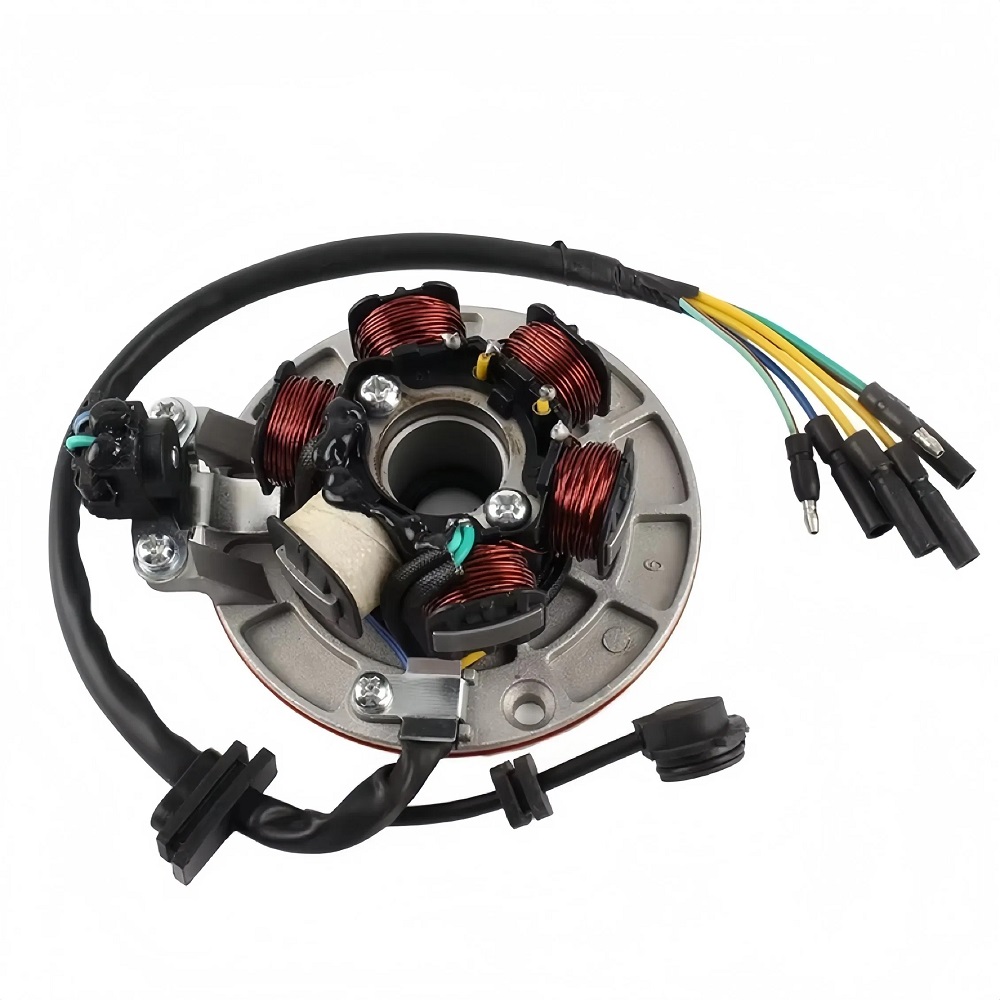
Leave a Reply